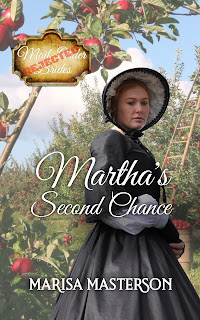Consider how far we go for beauty. I remember sitting for what seemed like hours so I could have lovely curly hair. The perm smelled and never turned out the way I imagined. Or think about the people who have botulism injected into themselves. All to plump up lips or cheeks.
The wallpaper and the apples are a bit like that. Both
involved the quest for beauty. Each could be deadly.
Not quite. What I mean is the quest for a lovely apple, the
kind we regularly buy in a grocery store. Once upon a time not all apples went
to market looking like that. They might have worm holes from the codling
moth.
The 1800s saw the arrival of that pest to the United
States. It hitched a ride on plants brought by immigrants to this country.
There was one good way to stop them and grow lovely fruit--Paris Green.
Paris Green! Do you recognize the name? It was famous as a
highly desired wallpaper.
It was infused with arsenic. People went slowly insane and
some died from exposure to it.
Sadly, the same chemical in that paper was what allowed
consumers to buy beautiful apples. Growers sprayed their orchards with Paris
Green. I mention this in my novel Martha's Second Chance:
The trees had yet to be sprayed. “Uncle Chet’s apples sold better than some because they looked so perfect. We need to spray the trees before the codling moths lay their eggs.”Emory remembered her evasiveness as he gripped the sprayer and pushed the rod through the metal tube. A poisonous mist spurted from the nozzle. The liquified Paris Green settled on the early fruit.
That was another reason Chet’s apples had always sold well. He had the earliest fruit in the area. Emory remembered the old man laying a finger beside his nose, signaling he was about to say a secret. “Brought grafts with me, I did. Carolina Reds and Spitzenberg apple trees.”
Carolina Reds were a July apple. It was why Emory was spraying the fruit at the start of summer. Even with the colder weather in May, little green apples dotted the trees. He certainly had his work cut out for him. He had a lot of fruit to spray in a short amount of time.
He would work night and day to finish this for Martha. Above all else, he did not want her working with the poison. She needed to be safe inside the house.
To guard his own health, he wore two shirts—buttoned tightly at his neck—and tied twine around his wrists. Thick leather gloves covered his hands. He had a hat on his head and three bandanas tied over his nose and mouth. Arsenic was nothing to take chances with, and he was forced to do that very thing to produce a lovely piece of fruit.
Wallpaper or apples, neither was quite as beautiful as they seemed. At
least, not with the presence of poison.
By the end of the nineteenth century, growers stopped using the poisonous
Paris Green. A zinc-based pesticide was invented. It was far less toxic.
Hmm! I wonder, as I bite into a perfect Gala apple, what might be sprayed on it.
 |
| NOW AVAILABLE! |
Love comes easier than trust and forgiveness in this second chance romance.
Only one thing mattered more than the apple orchard to Martha, and Emory had been it! Too bad he left her standing alone at the altar the prior year.
Her dying uncle arranged for her to become Emory's mail-order bride. At a loss after her mother's death, Martha grabbed the chance to have a husband and traveled to Oregon to get that. In the end, she has an orchard and not the groom who corresponded with her.
A year was not long enough to forgive Emory for abandoning her at the church. Martha realizes this when she opens her door to see him standing on her porch. Worse yet, he hands her proof that her dead uncle deeded half of the orchard to Emory.
Is there any such thing as a true second chance? Will working day in and day out with her former fiance allow Martha to learn to trust the man she never stopped loving?




No comments:
Post a Comment